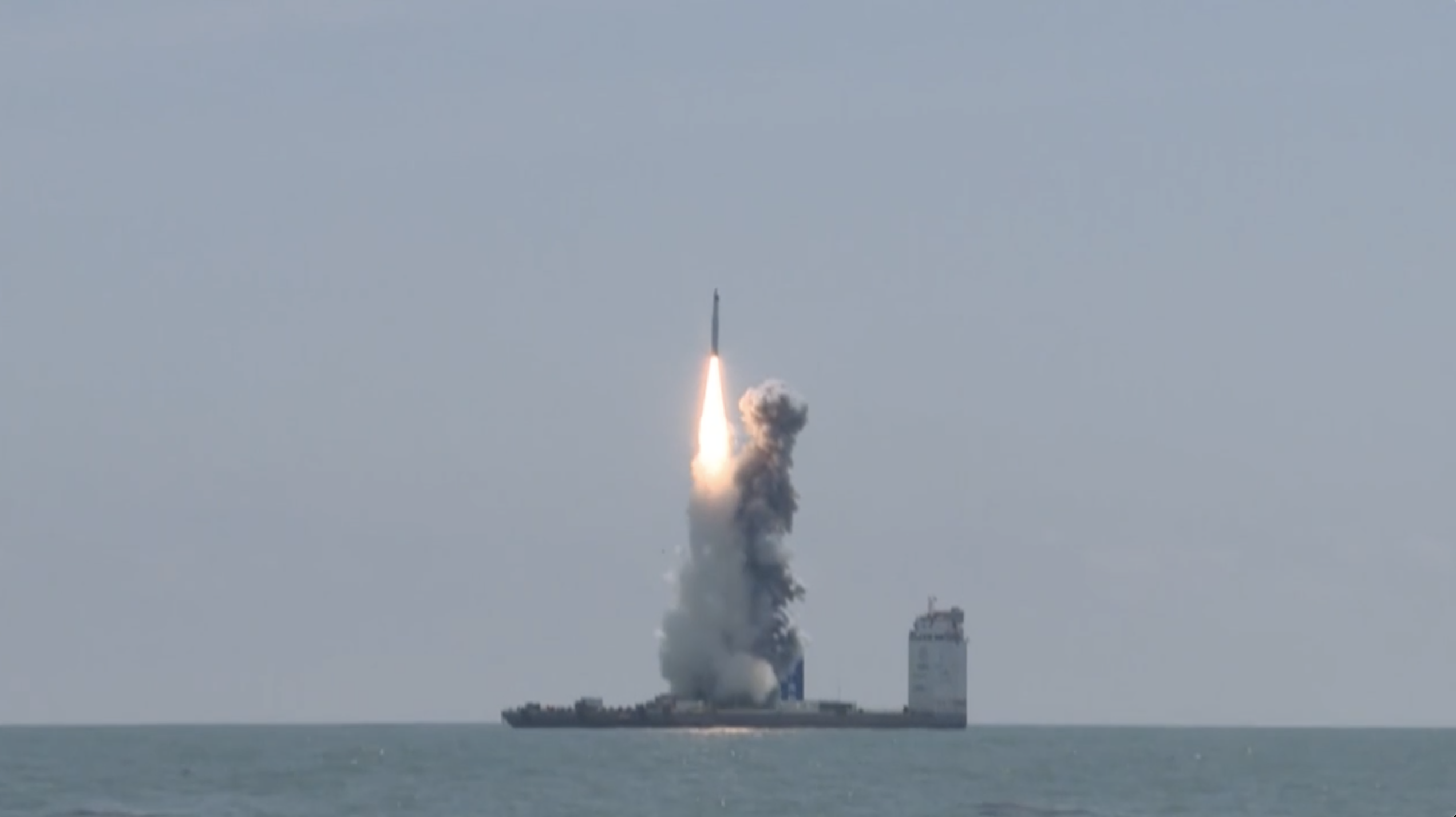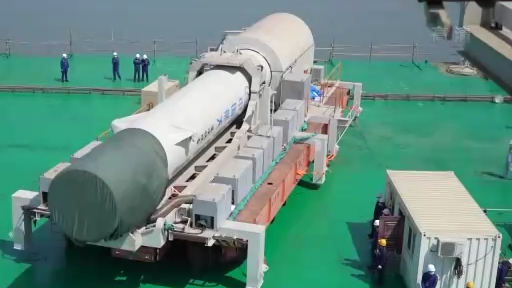01:00

China sent five satellites into orbit aboard a Long March-11 carrier rocket at 11:30 a.m. on Saturday (BJT) from a platform in the East China Sea.
The new Earth-observation satellites have since successfully entered their predetermined orbit, and will provide commercial service for natural resource surveys, urban planning, disaster monitoring and other tasks.
They are part of the Jilin-1 Gaofen satellite series – gaofen is an abbreviation for "high resolution" in Chinese – which is expected to have 138 satellites by 2025 and become the largest commercial observation constellation in China.
This launch also represented the 418th of China's Long March rocket series.

Most rocket launches are carried out on land, but sea-based rocket launch technology is vital for China's space program as it provides more flexibility and safety for spacecraft launches. /CMG
Most rocket launches are carried out on land, but sea-based rocket launch technology is vital for China's space program as it provides more flexibility and safety for spacecraft launches. /CMG
Sea launch safer and more flexible
This was China's third sea-based launch mission, as the country seeks to further expand the maneuvering range of maritime launches and accumulate technological expertise for future long-distance sea-based launch missions.
Most rocket launches are carried out from land, but sea-based rocket launch technology is vital for China's space program as it provides more flexibility and safety for spacecraft launches, Dong Xiaobin, deputy director of the Long March-11 rocket project at the China Academy of Launch Vehicle Technology (CALT), told China Media Group (CMG).
Different launch locations are better suited to different types of spacecraft to get into the orbit, and China's long coastline provides plenty of sites for sea-based launches.
"We can choose the launch site more flexibly according to the requirements of the mission so that we can make full use of the rocket's lifting capacity. Also, if it is a sea launch, we can ensure that all the rocket debris falls into the sea through ballistic design," said Dong. This makes such launches safer for people on land.

Sea launches can make full use of China's rich marine resources, boosting the development of aerospace technology and marine engineering. /CMG
Sea launches can make full use of China's rich marine resources, boosting the development of aerospace technology and marine engineering. /CMG
Perfect match of space tech & marine resources
Sea-based launches can also make full use of China's rich marine resources, boosting the development of aerospace technology and marine engineering.
The floating platform for Saturday's launch used to be a semi-submersible barge.
After modification, the platform, which is larger than a standard football pitch, became home to carrier rockets, satellites and supportive equipment, including a temperature-controlled cabin for the satellites.
"The temperature-controlled cabin here is to ensure that the satellites stay in a comfortable environment. Although the sea (environment) has high humidity with salt spray, the satellites are placed in a very good environment," Zhang Ming, deputy chief designer of the Long March-11 rocket project at CALT, told CMG.
The control center of the sea-based launch mission -- from which scientists and engineers monitored the whole launch -- was also at sea, located on a separate ship about three kilometers from the launch platform.
"The control room provides an integrated space for the rocket's control, command and monitoring systems, contributing to the success and smooth launch of the rocket," said Liu Yaguang, chief designer of Long March-11 rocket control system at CALT.

